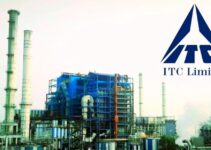Transportation is one of the key areas of logistics and supply chain management. It comprises planning inventory, organizing, storing goods, and predicting demands. However, the objective of businesses and companies is to amplify reliability and efficiency, and decrease cost. Today, we’ll discuss transportation in logistics management; its definition, key elements involved, and four main types.
What is Transportation in Logistics Management?
Transportation in logistics management is the process of transporting inventory throughout the supply chain process efficiently and effectively. Often, people use the two terms synonymously and interchangeably, but they both are different. In fact, transportation is the key area and subdivision of LM. If you are managing various supply chain processes of the company, then it offers you various time and cost-saving benefits.
Focus Area
The focus of transportation in LM is managing the movement and flow of goods and products from one point to another. Businesses and companies employ various routes like sea, land, and air for the delivery of products and goods. You can divide the transport function into three main areas and they’re as follows;
- Infrastructure administration
- Fleet and vehicle organization
- Operation management
Transportation Under LM
Implementing logistical operations efficiently and effectively lays the foundation of a transportation network that would quickly react to the changing business needs and requirements. It allows you to amplify customer service and deal with unexpected issues with limited to zero disruptions to your service process.
Automation
Logistical operations and transportation should collaborate with each other to satisfy the customer’s orders at the lowest possible price. That’s why automation technology is growing exponentially among logistical and transport companies. Business executives and managers could systematically predict forecasts, and recognize the redundant tasks and activities across the SC network with limited errors at an economical cost.
Data Lagging
Along with automation, the usage of data lagging is growing at a great rate. Both logistical operations and transport collaborate with each other in data analysis and gathering. However, it helps businesses and companies to have valuable insight into their SC processes over the long term.
Elements of Transportation in LM
Some of the key elements of transportation in logistics management are as follows;
Optimizing Inventory Flow
If you are managing transport effectively, then it helps you to run your various SC processes smoothly. You could maintain your inventory lean by employing various transport methods. It allows you to save storage expenses, decrease lead time, and amplify warehousing operational efficiency.
Environmental Sustainability
When you streamline your various logistical operations, then it benefits you in decreasing your carbon footprint. The carbon emission rate is very high in the transport industry. Nowadays, customers want to engage with such businesses and companies that are socially and environmentally responsible organizations.
Preferred Shipper
Limited trucks mean limited trailer space, and limited trailer space would equal to longer lead time. Businesses and companies could avoid this weakness by becoming the preferred shipper. The status of preferred shipper would tell various stakeholders in the industry that you are managing your logistical operations smoothly.
Types of Transportation in LM
Some of the main types of transportation in logistics management are as follows;
Maritime Transport
It is when you move people and products from one geographic location to another by sea like ships and boats. Due to the increase in commercial aviation, many people travel by sea via cruises and ships. Often, they employ large ships to transport goods through international waterways. Some of the main traits of maritime transport are as follows;
- Different types of ships could manage various types of cargo because they represent a flexible form of transport
- It is prevalent to integrate maritime with other forms of transport, due to the improvement in highways
- The best method of transporting bulk size and quantity material via sea
- High storage capacity for bulk loads
Land Transport
Transporting goods through land is a very common method of logistics. It is a very popular method for short travel and you could also use it for international transport. Large infrastructure and a network of roads have amplified its growth by delivering goods to the other side of the country. Some of the main features and traits of land transport are as follows;
- Cheaper mode of transport than air travel
- Helps you to transport dangerous material
- Emergency transport of patients
- Promoting door-to-door delivery service
- Transport both products and people via roads
Air Transport
Tech development of the 20th century has made the air transport possible. The differentiating factor between this mode of transportation and others is the limited infrastructure; it needs a flat surface for landing and takeoff. Some of the main traits and characteristics of air transport are as follows;
- Ideal for transporting perishable and expensive goods
- Moves cargo when land or sea-based transport is not possible
- Quick and speedy mode of transportation
- Makes it possible to move goods uninterrupted
Rail Transport
Various modes of transport are causing pollution, and rail is the safest mode of transport in terms of environmental sustainability. You could plan the rail transport in terms of schedule and route. Some of the main benefits of rail transport are as follows;
- Transporting large volumes and size of goods in few trips
- Economical mode of transportation compared to others
- Flexible mode that allows you to transport different types of goods
- Lowest rate of accidents and pollutant impact on the environment
- Avoid congested traffic issues
Conclusion: Transportation in Logistics Management
After an in-depth study of transportation in logistics management; we have realized that transport plays a significant role in the movement of inventory. If you are learning about the role of transport in LM and SCM, then you should keep in mind the abovementioned elements and types.
Ahsan is an accomplished researcher and has a deep insight in worldly life affairs. He goes Live 3 days a week on various social media platforms. Other than research writing, he’s a very interesting person.


